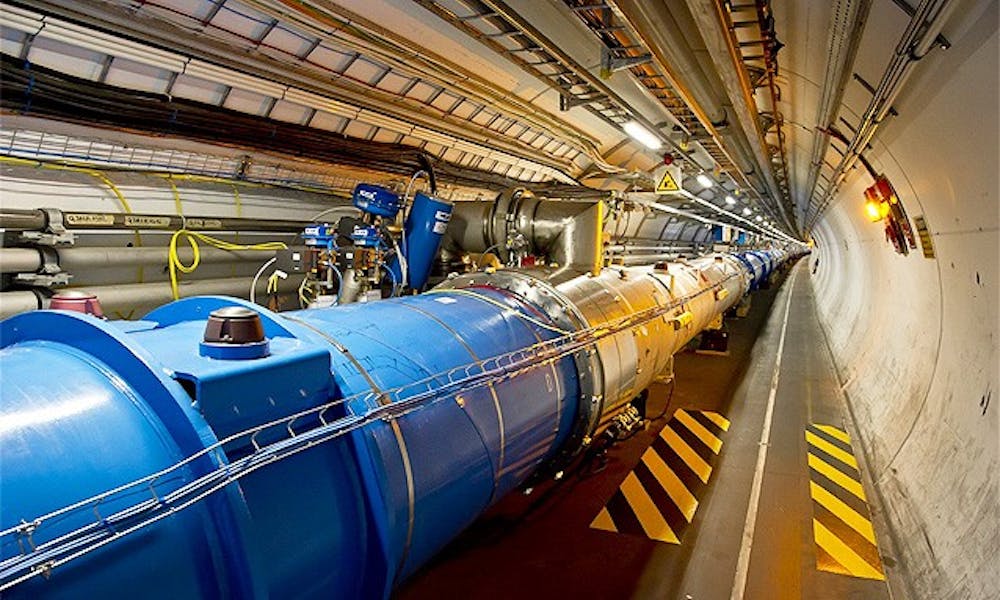A recent simulation by a group of physicists has proved that it is possible to split the charge of an electron in half.
The researchers, including Matthew Hastings, associate professor of physics, used supercomputers to show that under certain conditions, a collection of particles could take on one half of the fundamental charge of an electron. This marks the first time that a collection of particles has been identified with partial properties of the fundamental particles, suggesting new lines of inquiry for condensed matter physics. The results were published by Hastings and his colleagues, Sergei Isakov of the University of Zurich and Roger Melko of the University of Waterloo in Canada, who are working the Large Hadron Collider in Switzerland. The results were published in the Jan. 13 issue of Science magazine.
“This is a computer simulation, and we do not have real materials,” Hastings said. “But it is a fact that we think could occur in real materials.”
The research aimed to study the property of collections of particles instead of the fundamental particles—namely, electrons, neutrons and protons—individually. In most cases, the collections of particles essentially look like the fundamental particles without significant change in property, Hastings said.
Under certain excited states, however, the collection of particles would act like a single particle which is no longer similar to any fundamental particle, according to Harold Baranger, professor of physics and a specialist in theoretical condensed matter physics.
“Those states are very interesting to physicists as we want to understand how we get excitation that is so different from the fundamental macroscopic model,” Baranger said.
It was under one of those states that two new “particles”—actually collections of fundamental particles, which behaved like one particle—came into being, each with a charge equal to half of an electron’s charge. This is the first time such a charge has been recorded in condensed matter physics, Baranger said.
Though not actually splitting an electron, the research proves the electron to be destructible by showing that some objects could inherit part of its property.
“When we speak about ‘splitting’ it, you should consider it more as a metaphor,” Hastings said. “People like high energy physicists actually split things to see what they are made up of, but we are splitting [the electron] in a different sense.”
This finding provides the first actual evidence in support of a theoretically predicted phenomenon, Hastings noted.
“The idea of ‘splitting’ things has been around for more than twenty years, but some of the particular ways that it could split are purely theoretical,” he said. “We really lack experiments, but the next best thing we could do is to make a simulation to see whether this fact could occur.”
Besides proving that the fact does occur, the discovery also generates insight into the dynamics causing the collections of particles to transform between various states.
“[Hastings and his colleagues] found a phase transition, which the half-electron charge was connected to, from one type of state to another, as they changed the parameters of the system,” Baranger said. “That is what we are truly excited about.”
The computer simulation, however, is never the final goal, Hastings said. Researchers are still looking for ways to make the phenomenon occur in real settings, and this simulation could guide them in that pursuit.
Baranger also pointed out that the finding could open up new avenues for a wide range of physics study.
“It opens up a whole new possibility of behavior, which remains to be seen in lots of other areas,” Baranger said. “What would happen in experimental materials is not clear yet though—my colleague and his collaborators have a number of good suggestions for where it might happen.”
Haiyan Gao, professor and chair of physics, said she hoped the frontier discoveries made by Duke faculty like Hastings would encourage more Duke students to study physics.
“Although our department is relatively small, people are doing condensed matter physics broadly and attracting interest and attentions from our peer institutions nationwide,” Gao said.
Get The Chronicle straight to your inbox
Signup for our weekly newsletter. Cancel at any time.

